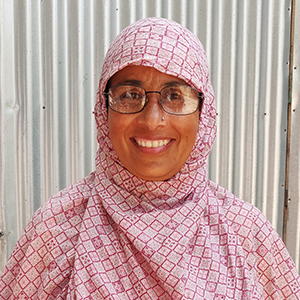| |
Reading Glasses Help a Homemaker and Entrepreneur Thrive
 |
| | Jasmin Akter. |
|
Jasmin Akter is a homemaker and entrepreneur living in Manikganj, Bangladesh. Recently, the 42-year-old received much-needed +1.50 reading glasses—her second pair of readers from VisionSpring’s Reading Glasses for Improved Livelihoods program. “Eyeglasses are like my best friend now," Jasmin said. "They help me do what I do for a living, and I can't think of putting them down, because without glasses, none of my work gets done."
Living in rural Bangladesh, Jasmin faced tough times during COVID-19. She managed a small cow farm and tended a vegetable garden for extra income. But two years ago, she realized she couldn't see clearly while trying to keep track of her milk sales—it was a struggle to earn money.
Then, Jasmin got her first pair of glasses through the VisionSpring program. With her new glasses, Jasmin saw the world clearly again. She called them her “best friend” because she couldn't work without them. With clear vision, Jasmin decided to try something new. She learned about growing mushrooms and started her own business. She also expanded her farm and poultry business. Before getting her eyeglasses, she earned around 10,000 BDT, but now Jasmin makes more than 15,000 BDT.
“Jasmin's story is inspiring,” said Melissa Bromley, VisionSpring’s global communications manager. “In a society where women aren't necessarily seen as earners, she is significantly contributing to her household income. Jasmin's eyeglasses are a key tool for her to fully leverage her entrepreneurial talent as well as her farming skills. Glasses have helped her see opportunities she couldn't see before.”
| |